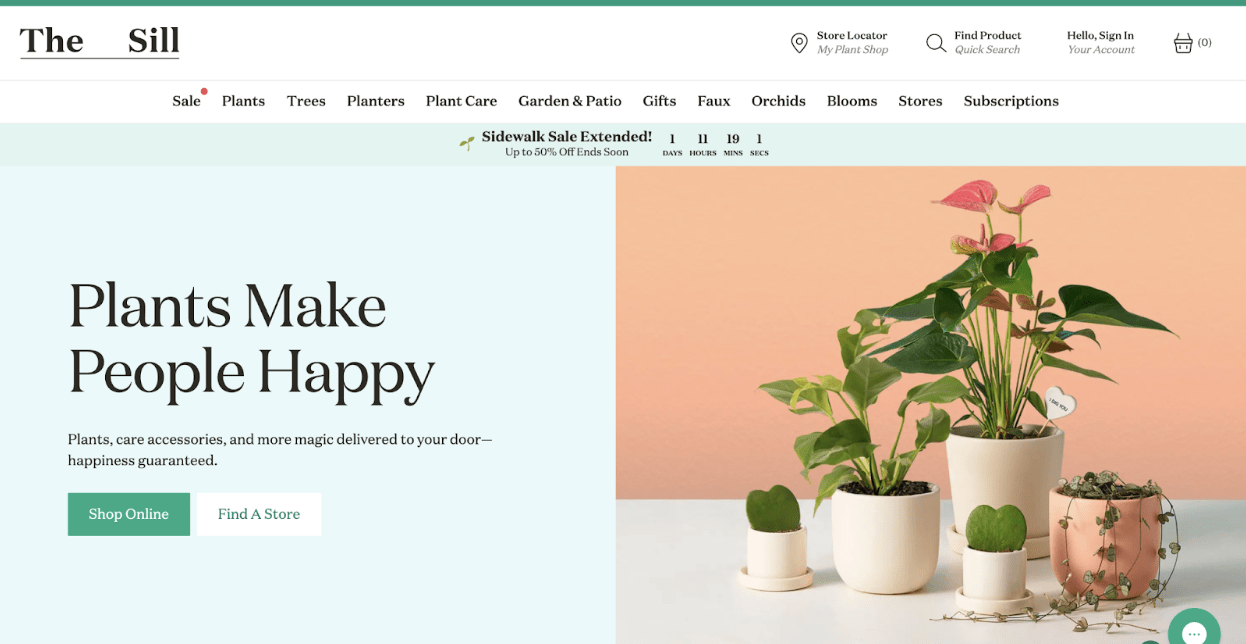Buy with One Click is a Trick– How to Escape the Mindlessness of Online Shopping
Two weeks ago my mom sent me a text saying, “Check your mail! I sent you something that needs attention!” When I go down to the mailroom I find a giant box that says, “Caution! Live Material!” I’m like, “Okay, what now, mom?” She is the type to send me random things, but a live material warning is a new one. I take the box up to my room and open it up to find a smaller cardboard box inside. I open that box and find a mass covered in thick brown paper, which I unwrap to find… bubble wrap! I unwrap the bubble wrap and see… a leaf? I continue through two more layers of bubble wrap until more leaves emerge, and dirt spills out and I realize that my mom has… mailed me a plant? Although it was looking slightly dilapidated and dehydrated from its time in the box, the plant was still fully alive and standing up straight.

Source: The Still
Although I thought that this was a sweet gesture, the irony of how much packaging material was used to ship this plant was not lost on me. I googled the name on the return address and was shocked to learn that there is an online market for potted plants. This got me thinking about the nature and ease of online shopping, and how this has changed both the quantity and quality of purchases made by consumers. While it is true that almost everything can be bought online today, should we be buying everything online, and how does this affect our relationship to the products that we purchase?
The primary change that online shopping has made to the consumer landscape is a significant increase in convenience and flexibility; making purchases has never been easier. Online shopping brings the most personalized recommendations based on not only the consumers’ purchasing history but also their activity on other internet sites. This extremely pointed advertising makes it easy for consumers to gratify their desire to purchase something without having to do much research into which product they want to buy, or whether they actually need to buy the product at all. Additionally, buying things online removes you physically from the shopping process, and spurs less thought on where the product comes from and why you need it. This has led to a significant increase in impulse purchases, something we are all guilty of, many of which ultimately end up wasted.
When thinking about online shopping in terms of convenience, pointed advertisements, and wide-ranging options, many of us may think of retail-giant Amazon, which has had such great effects on the retail market that the term “the Amazon Effect” has been coined. The Amazon Effect describes customer demand for a fast, personalized, and convenient shopping experience. Although the Amazon Effect has been seeping through the market for over a decade now since Amazon’s inception, it experienced a significant increase during the pandemic, to the point where Amazon now occupies such a dominant position in the market that questions about market fairness have been raised. Today more than 170 million Americans have Amazon Prime subscriptions, which is a majority of the country’s adult population.

Source: Knowledge at Wharton
Amazon’s “Buy with one click” feature can be credited to much of its success, as it not only represents a breakthrough in easy shopping, but it also gives Amazon a good reason to store its customers’ information. This stored information is used to continually bill customers, and also makes Amazon a more valuable marketplace to producers looking for a place to sell their products. This feature and the infrastructure that it has created has turned Amazon into a monopoly, with many shoppers going straight to Amazon without comparing prices on other sites. It’s worth digging into why consumers trust this Buy Now button, but first let’s explain exactly how the system works. Most of the products sold on Amazon are not actually sold by Amazon but are simply listed on Amazon’s marketplace. In order for a product on Amazon to have the Buy Now button, the product listed on Amazon must be the lowest price for that product on the internet. Amazon has extensive computer programs that scour the internet for products being sold on other websites for a cheaper price by sellers who also sell the same products on Amazon, and if they find the products listed cheaper elsewhere, even for just a penny less, they will punish the seller by removing the “Buy Now” and even the “Add to Cart” buttons. Many sellers complete a large portion of their sales on Amazon, so removing these two buttons from their Amazon product listing can significantly reduce sales. This leaves the sellers with only two options: raise their prices on other websites, or lower their prices on Amazon. Given the monopoly that Amazon holds in many market categories, many sellers choose to lower their prices on Amazon.
While this tactic significantly increases profit for Amazon and other retail giants, it has terrible social and environmental ramifications. Many brick and mortar stores as well as small businesses struggle to keep up with the competitive market. Additionally, cheaper products are not only more pollutive in all aspects of the production process, but they also often break much more quickly and have to be replaced more often. This causes consumers to often spend more money on multiple cheap products than one more expensive product that is made to last. It should be noted that this pattern applies to not only necessities but also trend items which are promoted through online shopping algorithms.
Although the convenience of Amazon and other online shopping platforms is undoubtable, I believe that it is important to examine your relationship as a consumer to the products you are purchasing, and how you are purchasing them. Although I don’t think it is realistic for everyone to cancel their Amazon Prime subscriptions, I think that practicing more intentional purchasing is useful to reduce your environmental footprint. A good tactic to do this can be waiting a week or so before purchasing non-essential items, and making sure that you still have interest in purchasing them. While I know it is difficult to avoid the personalized advertisements and low prices, I think that making the decision to resist buying a single-use product online can be just as fulfilling as making the purchase.
Sources:
https://restore.tchabitat.org/blog/environmental-impact-of-buying
https://www.nytimes.com/2023/10/02/podcasts/the-daily/amazon-ftc.html?showTranscript=1
https://www.cmswire.com/ecommerce/how-the-amazon-effect-has-impacted-ecommerce/


